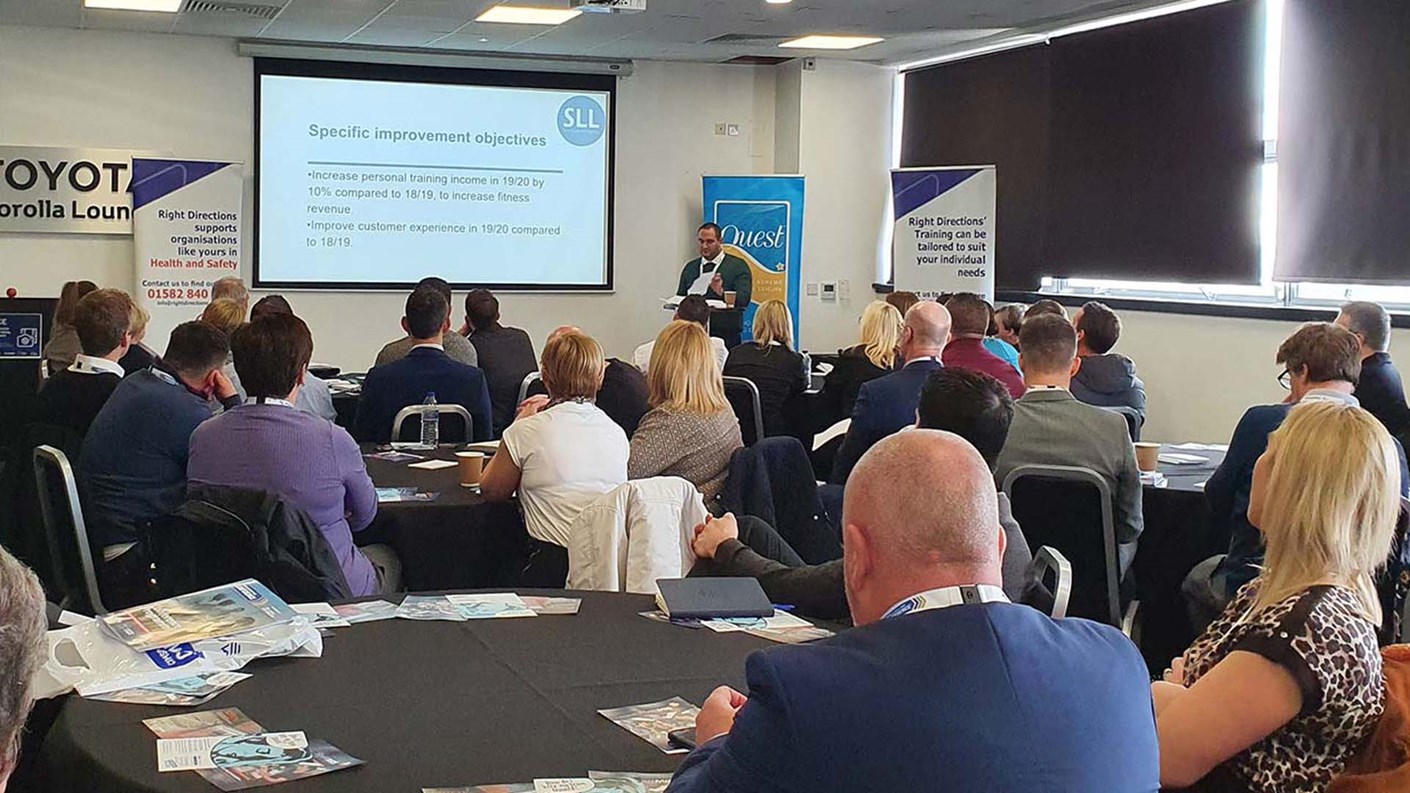Planning to improve
Mark Thornewill
Quest Partnership Development Manager
Phillip Rose
Centre Manager, Sandy Sport Centre and Saxon Pool Leisure Centre, Stevenage Leisure Limited
Organisational goals and objectives
Phil gave a quick introduction about himself and an overview of Stevenage Leisure Limited (SLL), which has been operating for 20 years. SLL has a strong ethos on continuous improvement and all their centres operate within a quality framework.
At his organisation, SMART objectives were introduced to understand what needs to be accomplished.
- S – Specific
- M – Measurable
- A – Achievable
- R – Relevant
- T – Time Bound
If a centre needs to increase their café income or increase their memberships we need to know why this has to be done and who needs to be involved. How might the centre get customer support and buy in? How does the centre work towards developing how this will be done? Who will help to set targets?
Any objective or goal needs to be achievable by the team and it should be measured using quantifiable methods, such as a percentage increase. Using financial data such as monthly profit and loss, usage reports and other information can help set a realistic and relevant target. Also decide how this will be tracked which could be manager’s meetings or customer forums, or both, until the target is reached.
Two examples were given.
The first was about increasing personal training income and involving the fitness manager and staff to develop a plan, decide how it will be tracked and how all will be kept informed. The end is the impact that is made.
The second example was about improving customer service experience which involves different areas. Customer comments, customer surveys and mystery visits all look at different areas to collect customer’s views. There might also be quarterly unannounced quality audits carried out by an external company to get a different view of the customer service. All of the results are analysed to see where there are positives and if highlighted other areas to improve.
Customer insight and strategy
Mark gave a quick background on his experience. He said it was a privilege to go into centres and he’d seen some good practice and how this is shared to improve the industry.
Mark was going to be talking about two examples; Places Leisure and Sparkhill Pool, Birmingham.
Sparkhill is one of the most deprived wards in Birmingham with a diverse community with a significant BAME population and low participation by women and girls and the centre was not meeting the needs of the market.
Customer insight was used not just from centre users but all groups, as well as using insight from the Active Partnership in Birmingham. A review of the facilities and programme was undertaken and a new women’s only gym, sauna and changing rooms were created. A training programme was put in place for female lifeguards and fitness instructors and a new programme developed. There was also an education programme for women who didn’t know how to swim to ensure that they were comfortable.
There was a guarantee that it would be women-only staff. Bilingual staff were also available.
An inspiring young person with only three years experience was appointed as champion, who grabbed the agenda, and drove this forward.
The new offer gave a variety of activities for women and girls to participate in and there was an outreach programme to widen the reach.
The impact was increased memberships, swimming attendance, class occupancy, number of female employees, as well as attrition rates down and a wider market reach. Social value had significantly increased.
Inspiring Healthy Lifestyles, Health and Wellbeing Team, Cannock Chase
Health and wellbeing is an integral part of the leisure contract and the team provide a wide range of sports and health programmes. The team works with a wide range of partners.
The use of logic models was provided by the local Active Partnership and now used across all programmes to support business planning.
The key elements were looked at, such as strategic aims, insight and evidence of need, outputs and outcomes and identifying partners and their needs. Also there is a need to look at pathways to participation (including marketing and signposting to participation routes, key activity and milestones, agreed measures of success and dynamic insight).
There were a range of benefits noted including a strategic process, plan on a page clarity, ease of communication, and a structured approach to planning, doing, measuring, reviewing and evaluating impact.
